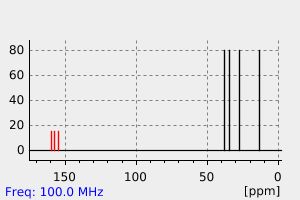代谢
草铵膦的代谢在人类中尚未得到充分研究。预计会再次产生肟,随后像甲硫磷那样形成酮。二甲乙酰基团可能水解形成N,N-二甲基甲酰胺,以N-甲基甲酰胺和甲酰胺的形式通过尿液排出...或者是N,N-二甲基碳酰胺酸。
The metabolism of oxamyl ... has not been much studied in humans. Oxime production would be expected to occur again ... with subsequent ketone formation as for methomyl. The dimethylacetyl group may hydrolyze to form N,N-dimethylformamide, excreted as N-methylformamide and formamide in urine ... or N,N-dimethyl carbamic acid.
来源:Hazardous Substances Data Bank (HSDB)







